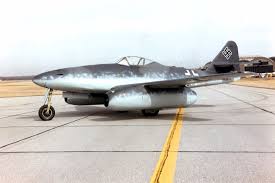 |
ტოპ მომხმარებლები |
 |
 |
| Admin Generalissimo | სიახლე: კომენტარი: პოსტი: | 1503 237 217 |
| Checked Major | სიახლე: კომენტარი: პოსტი: | 215 207 29 |
| Moder Major | სიახლე: კომენტარი: პოსტი: | 122 185 87 |
| Admin Colonel general | სიახლე: კომენტარი: პოსტი: | 51 93 11 |
| Checked Private | სიახლე: კომენტარი: პოსტი: | 27 49 5 |
|  |
 |
 |
 |
|
 |
P-51C Vs. ME-262 |
 |
 |
 <- P-51C <- P-51C
 <--- ME-262 <--- ME-262
jer daviwyot P-51C mustangis upiratesobebit: mustangi ufro manevrirebadia da ufro magla afrinevs. samagierod ME-262- turboreaqtiuli dzra aqvs da ufro swrafad dafrinevS. ME-262-is 4 cali 30mm saaviacio qvemexo 6 cali mustangis 12.7 mm tyviamfrqvevebis winaagmdeg.
gadamrjvebuli: ME-262 |
 |
 |
 |
 |
 |
McDonnell Douglas RF-4 Phantom II |
 |
 |


The reconnaissance version of the Phantom II was first flown as the YRF-4C on August 8th 1963 and entered production in May 1964 as the RF-4C. The new aircraft had all its bomb and missile delivery systems removed and its nose lengthened to accomodate a new radar. Extensive modifications were also made to the avionics suite and the plane can be fitted with a comprehensive array of alternative camera fittings. The RF-4C served in Vietnam from 1965 onwards has also been supplied to Germany, Australia, Iran, Japan, Spain, Greece, Turkey and South Korea.
When Israel was finally permitted to purchase the F-4E Phantom in 1968, it lost no time in also ordering six photo reconnaissance RF-4Es, an export version of the RF-4C with a reduced electronic fit. The RF-4Es however, did not arrive in Israel until February 1971, and the earliest Phantom reconnaissance missions were flown by regular F-4s. Even when the first RF-4s arrived, these were not the RF-4Es but rather a pair of RF-4Cs loaned to Israel under operation "Night Light". These were in service between August 1970 and March 1971 and were retired with the arrival of the RF-4Es. Upon its arrival, the RF-4E replaced the Dassault Mirage in the reconnaissance role, carrying a far more sophisticated suite of cameras than the Mirage. Unlike oth
...
კითხვის გაგრძელება »
|
 |
 |
 |
 | « 1 2 ... 5 6 7 8 9 ... 32 33 » |
|
 |
მეგობრები |
 |
 |
|
 |
 |
 |
 | |



